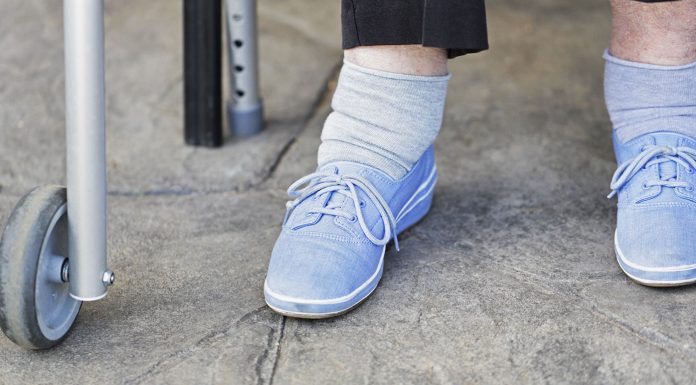Some wounds empty rooms. The smell is so pungent that it has nurses gagging.
Malodorous, fungating malignant wounds are challenging for seasoned health professionals, so one can only imagine how distressing it is for the cancer patient living and dying with the wound.
Wayne Naylor’s nursing career has brought home to him that, just sometimes, wound care is not foremost about healing. Sometimes, there is no healing potential or simply no time to heal.
Instead, it is about doing your best to ameliorate distressing symptoms, to reduce suffering, and to address a patient’s holistic needs by taking a palliative approach to wound care.
The cancer wound care expert trained at Otago Polytechnic in the early 1990s when new interactive wound dressings first caught his interest. After a short stint in mental health, he built on that initial interest by working at Middlemore’s reconstructive plastic surgery and burns unit.
On Naylor’s OE, he fell into an agency job at London’s Royal Marsden Hospital, at the time, the largest comprehensive cancer centre in Europe. He ended up spending five years there, inevitably becoming interested in cancer too, and he merged his two interests in the late 1990s by becoming Marsden’s first wound management research nurse at the same time as completing an honours degree in cancer nursing.
Two kids later, he and his family returned to New Zealand in 2002 for him to take up a cancer clinical nurse specialist position in Wellington. His career since has continued to have a cancer or palliative focus, from his recent palliative care analyst role with the Cancer Control Council, to his new position as director of nursing for Hospice Waikato (he is also currently working on his PhD, looking at symptom prevalence and clusters in palliative care patients).
But Naylor’s parallel passion for wound care has also continued. So much so that he’d been in Wellington less than a week back in 2002 before he found himself nominated as local coordinator for the Wound Care Society. He has now been the society’s national president for nearly four years, and he has seen membership more than double in the past decade to just short of 500.
The society, like the specialty itself, is dominated by nurses. Naylor says he likes the independent nature of working in an area where generally worldwide nurses hold the expertise.
Wound care is also an area open to innovation, and as a creative person outside of work – his hobbies include bone-carving, drawing and jewellery – he likes putting his creative and problem-solving skills to work to find solutions for patients.
Combining cancer nursing and wound care, as his London role did, was innovative on its own, with only one other nurse in the UK at the time, and very few globally, specialising in wound care management in cancer or palliative care patients.
The type of wounds particular to cancer patients receive little research and the small volumes mean they attract little interest from the wound dressing companies, so a cancer wound specialist can’t readily find research literature on the topic or pull a dressing off the shelf to meet their patient’s needs.
Naylor says there are three types of wounds that usually aren’t seen outside of cancer patients. The first are malignant, fungating wounds, where the cancer is actually growing out of the wound or causing ulceration.
“So you have not only a wound but also an active cancerous tumour.”
The second is radiotherapy skin reaction – often mistakenly called a radiation burn – which is caused by the skin absorbing too much radiation, resulting in an affect similar to “very, very bad sunburn” where the skin peels off, leading to the risk of infection.
The third can follow if a bone marrow transplant triggers a ‘graft versus host’ reaction (the donor graft attacks the host body as a foreign object) affecting the skin, causing large blisters and skin loss.
“I have seen people lose skin off their entire bodies.”
All three wounds are terribly debilitating, but the malignant fungating wounds usually occur in the last six to 12 months of the person’s life, so their wound care also becomes part of their palliative care.
Naylor says some of the more distressing symptoms of a fungating wound can be exudate oozing from the wound, and sometimes, a pungent malodour arising from the wound. Bacteria in the wound can release foul-smelling cadaverine and putrescine chemicals that – like they sound – smell similar to rotting flesh, and gagging is a common reflex.
He can recall nurses removing everybody from outpatients after the smell from a person’s fungating wound had permeated the whole department.
“You had nurses setting up essential oil burners to try to get rid of the smell.”
To have health professionals’ struggling to stay in the same room with you because of the smell is distressing for a patient. Naylor says he has never become accustomed to the smell, but he focuses on the person beneath the wound and reminds himself that if it’s bad for him, it’s hundred times worse for them.
Not surprisingly, people living with this wound can feel socially isolated and become depressed, angry and withdrawn.
“You need to look at the whole care of the patient from a holistic point of view.”
This includes carrying out a full patient assessment and history to find out what has led up to the fungating tumour and then explaining to the patient what is causing the smell and what can be done to treat it. Treatment includes debriding necrotic tissue, using topical or systemic antibiotics, and using antimicrobial or odour absorbing dressings on the wound like activated charcoal, silver, occlusive dressings, or honey.
Naylor’s recent work in palliative wound care has seen his wound care focus swing to taking a palliative wound care approach to not only people dying with wounds but also people living with wounds that are not expected to improve or heal.
“The vast majority of wounds can be healed, but I think there’s always going to be a group, for various reasons, where healing is not going to be achievable,” he says.
He says this is no excuse for poor wound care. A full patient assessment and history may highlight a number of patient and wound factors – such as how long the wound has been there, co-morbidities, age, and the patient’s ability to tolerate or follow-through the treatment regime – that may mean healing this person’s wound is not a realistic goal.
“Instead, you may need to get on with helping that person live their life as best they can while managing the wound as well,” says Naylor.
“You may be able to set other goals like removing the odour, stopping exudate leaking, making it pain free, and ensuring they are not socially isolated. Achieving these goals may be possible and realistic, so both the patient and health professional can see you are making some positive steps.”





















